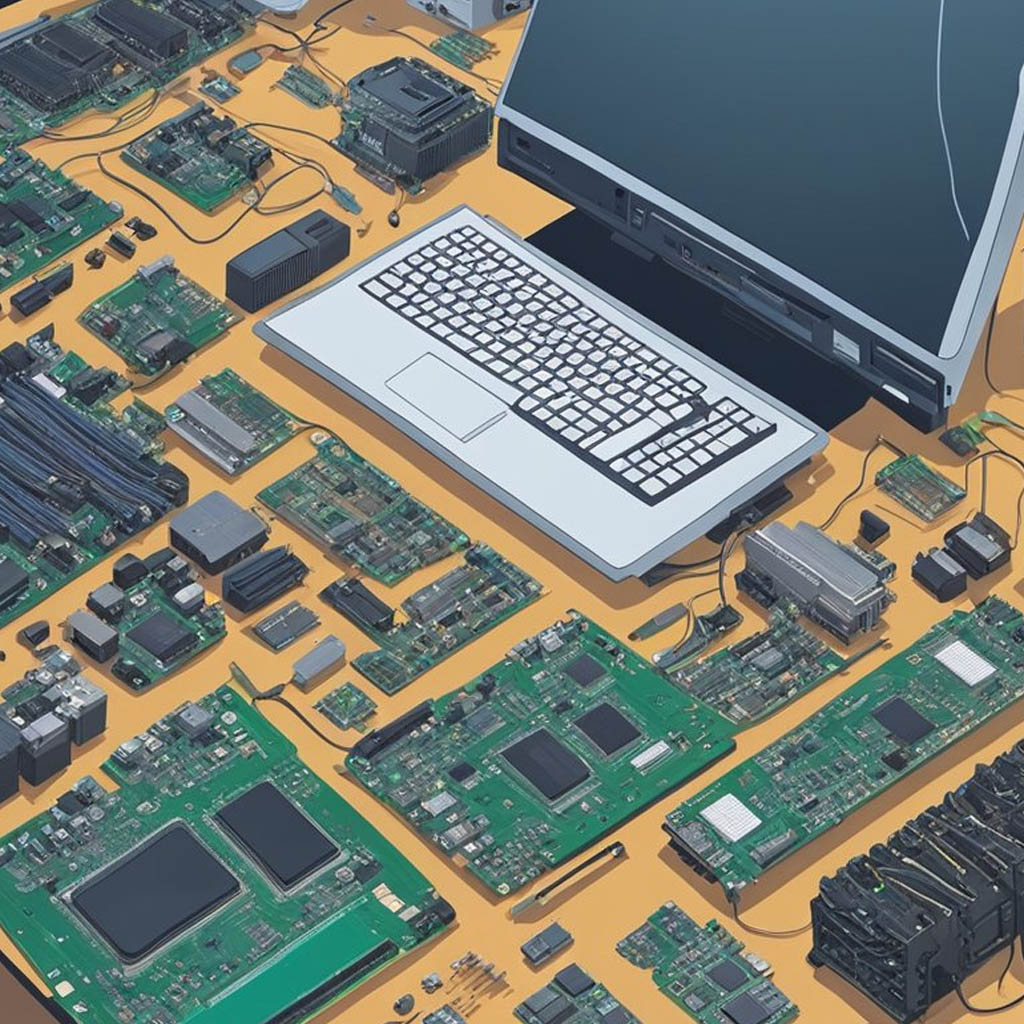Evaluating Your Old Computer Parts
When deciding what to do with old computer parts, it’s essential to determine how usable they are and identify which components have value.
Assessing Usability and Condition
First, we need to check if each part still works. This means testing components like the RAM, hard drive, CPU, and graphics card. Plug them into a working PC or laptop to see if they perform properly. If they’re in good condition, they can be reused or sold.
Next, we should examine the physical state. Look for any visible damage, such as burnt marks or broken connectors. For a hard drive, listen for unusual noises that may indicate it’s failing. For RAM and the CPU, ensure there are no bent pins or chips.
Sometimes, older hardware can still be valuable, especially for DIY projects or as backups. If the parts are too old or damaged, we can consider recycling or donating them.
Identifying Valuable Components
Let’s identify which parts are most valuable. Graphics cards and CPUs typically hold the highest value, especially if they’re from popular brands and newer models. RAM is also valuable, but it depends on type and size. Hard drives can be worth something if they have a decent storage capacity and work well.
The motherboard can be valuable if it’s compatible with newer components or has unique features. Old hardware may attract buyers who need replacements for outdated systems.
Using a price comparison tool can help us find the current market value. Websites like eBay or Craigslist give a good idea of what similar parts are selling for.
Repurposing and Upcycling

We can give new life to old computer parts by repurposing them into useful devices. This can save money and reduce electronic waste. Here are some specific ways to repurpose and upcycle.
Converting Parts Into a Home Server or Media Center
Using old computer parts, we can build a home server or media center. This is useful for storing and streaming personal data. An old desktop can become a NAS (Network Attached Storage) or media server with Plex or Kodi.
We only need to install an operating system like Linux or Windows. Adding an external hard drive can increase storage capacity. Configuring the software lets us access our files from any device connected to the same network.
DIY Projects for Tech Enthusiasts
Old computer parts are great for DIY projects. We can create custom hardware and gadgets. One popular project is upgrading an old computer to use as a router. Another is transforming an old tablet into a new device.
We can also explore building custom electronics, like smart mirrors or IoT devices. These projects let us experiment, learn, and practice new skills.
Building a PC from Old Parts
We can build a new PC using old parts. This is an affordable way to create a functional machine. Combine working components from different systems to build a custom desktop.
Upgrading individual components, like the CPU or GPU, can boost performance. Installing a modern operating system like Linux, MacOS, or Windows ensures compatibility with newer software. This approach extends the life of old technology and improves performance at a low cost.
Disposal and Recycling Options
When we are done using old computer parts, we have several ways to dispose of them responsibly. These include selling, donating, or recycling e-waste through reputable programs.
Selling and Donating Your Old Parts
Sell your old parts on platforms like eBay or Craigslist. Both provide a market for used electronics. Even if components are outdated, hobbyists or repair shops might need them.
Consider donating to schools or non-profit organizations. They often accept old equipment for educational purposes. Before doing this, ensure you wipe all personal data to protect your privacy.
Sometimes, Apple Trade In, Best Buy, and Staples offer gift cards or discounts for old parts. This can be a great way to get some value back while ensuring parts are used appropriately.
Environmentally Responsible E-Waste Recycling
Look for e-waste recycling programs. Earth911 is a great resource to find local options. Many e-waste centers handle obsolete parts, including lithium batteries, ensuring they don’t end up in a landfill.
Some stores, like Best Buy and Staples, have recycling bins for old electronics. These stores ensure electronics are recycled responsibly, avoiding environmental harm.
Avoid disposing of electronics in general trash. This prevents harmful substances from contaminating the environment. Engaging in responsible recycling helps protect our planet while dealing with unwanted electronic waste.
I’m Cartez Augustus, a content creator based in Houston, Texas. Recently, I’ve been delving into different content marketing niches to achieve significant website growth. I enjoy experimenting with AI, SEO, and PPC. Creating content has been an exciting journey, enabling me to connect with individuals who possess a wealth of knowledge in these fields.

